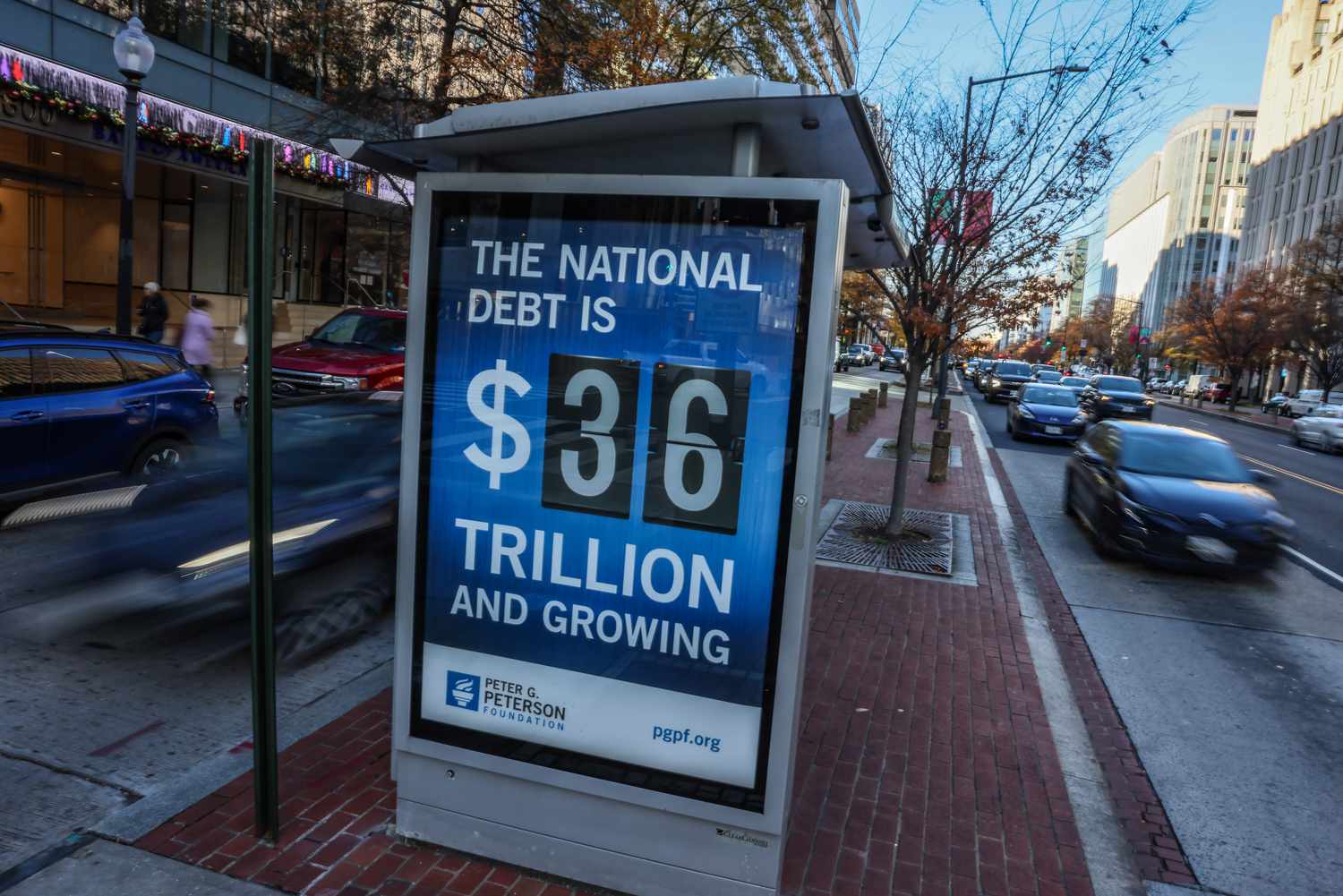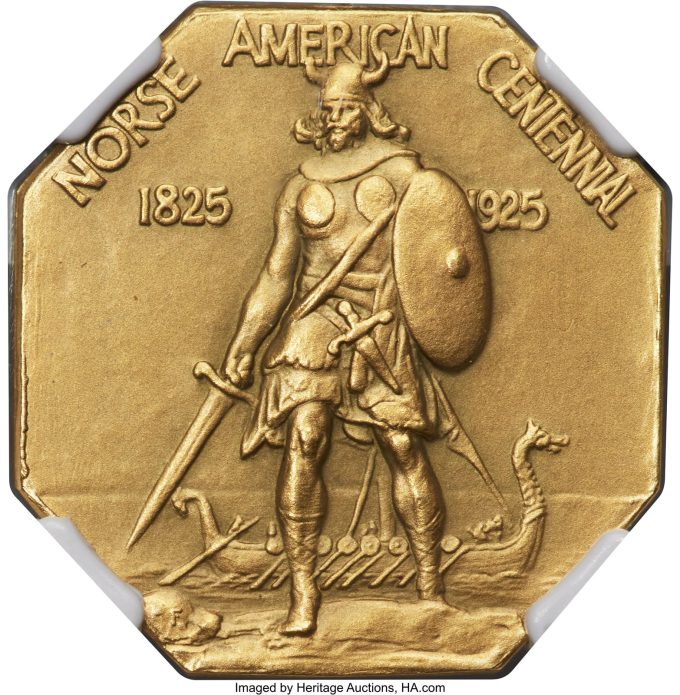Published on June 3rd, 2025 by Bob Ciura
We recommend long-term investors focus on high-quality dividend stocks. To that end, we view the Dividend Kings as among the best dividend stocks to buy-and-hold for the long run.
What is a Dividend King? A stock with 50 or more consecutive years of dividend increases.
Over the past 50+ years, the U.S. has gone through a variety of economic downturns, wars, stock market crashes, and many other difficult periods. Just a few of these include the tech bubble, the Great Recession, the coronavirus pandemic, and more.
And yet, the Dividend Kings continued to raise their dividends each year, through it all.
This is why we believe the Dividend Kings are the best-of-the-best in dividend longevity.
The downloadable Dividend Kings Spreadsheet List below contains the following for each stock in the index among other important investing metrics:
- Payout ratio
- Dividend yield
- Price-to-earnings ratio
You can see the full downloadable spreadsheet of all 55 Dividend Kings (along with important financial metrics such as dividend yields, payout ratios, and price-to-earnings ratios) by clicking on the link below:
Stocks that have increased their dividends for over 50 years have demonstrated the ability to continue hiking their dividends, even during recessions.
This is a testament to the strength and durability of their business models and competitive advantages.
The following 10 stocks have maintained the longest dividend streaks.
Table of Contents
You can instantly jump to any specific section of the article by clicking on the links below:
Longest Dividend Growth Streak #10: Johnson & Johnson (JNJ)
- Dividend Growth Streak: 63 years
Johnson & Johnson is a diversified health care company and a leader in the area of innovative medicines and medical devices Johnson & Johnson was founded in 1886.
On April 15th, 2025, Johnson & Johnson announced that it was increasing its quarterly dividend 4.8% to $1.30, extending the company’s dividend growth streak to 63 consecutive years.


Source: Investor Presentation
That same day, Johnson & Johnson reported first quarter results for the period ending March 31st, 2025. For the quarter, revenue grew 2.3% to $21.9 billion, which beat estimates by $330 million.
Adjusted earnings-per-share of $2.77 compared to $2.71 in the prior year and was $0.19 more than expected. Results included adjustments related to the costs of acquisitions.
Click here to download our most recent Sure Analysis report on JNJ (preview of page 1 of 3 shown below):


Longest Dividend Growth Streak #9: Colgate-Palmolive Co. (CL)
- Dividend Growth Streak: 64 years
Colgate-Palmolive was founded in 1806 and has built an impressive and extensive portfolio of consumer brands. It operates globally, selling in most countries around the world.
About one-sixth of its revenue comes from Hill’s pet food division, which has shown very strong growth in recent years.
The other five-sixths of revenue comes from a mix of cleaning and personal care products, with the company’s most recognizable brands being Colgate (tooth care) and Palmolive (soap).
The company has structured itself into four units: Oral Care, Personal Care, Home Care, and Pet Nutrition.


Source: Investor presentation
Colgate-Palmolive posted first quarter earnings on April 25th, 2025, and results were better than expected both the top and bottom lines. Adjusted earnings-per-share came to 91 cents, which was a nickel ahead of estimates.
Revenue was off more than 3% year-over-year to $4.91 billion, which beat expectations by $50 million. Segment profit was up 12% in Europe, and 30% for the Hill’s Nutrition segment.
Net sales were up 1.4% year-over-year on an organic basis, including a 0.4% negative impact from lower private label pet volume. Forex translation was a 4.4% headwind to net sales. Colgate expects net sales to be up low-single digits, including a low-single digit negative impact from forex translation. Organic sales growth is expected to be +2% to +4% this year.
Click here to download our most recent Sure Analysis report on CL (preview of page 1 of 3 shown below):


Longest Dividend Growth Streak #8: Cincinnati Financial Corp. (CINF)
- Dividend Growth Streak: 65 years
Cincinnati Financial is an insurance company founded in 1950. It offers business, home, auto insurance, and financial products, including life insurance, annuities, property, and casualty insurance.
Cincinnati Financial recently reported its financial results for the first quarter for Fiscal year 2025. The company reported a Q1 2025 net loss of $90 million ($0.57 per share), down from a $755 million net income ($4.78 per share) in Q1 2024, due to a $536 million drop in after-tax net investment gains and a $356 million increase in after-tax catastrophe losses from California wildfires and spring storms.
Non-GAAP operating loss was $37 million ($0.24 per share), compared to $272 million operating income ($1.72 per share). Total revenue fell 13% to $2.566 billion, despite earned premiums rising 13% to $2.344 billion and pretax investment income growing 14% to $280 million, driven by a 24% increase in bond interest.
The property casualty combined ratio rose to 113.3% from 93.6%, including 25 points from catastrophe losses, triple the 10-year Q1 average. The current accident year combined ratio before catastrophes improved to 90.5%.
Net written premiums grew 11% to $2.495 billion: commercial lines up 8% to $1.325 billion, personal lines up 13% to $672 million, and excess and surplus lines up 15% to $168 million.
Click here to download our most recent Sure Analysis report on CINF (preview of page 1 of 3 shown below):


Longest Dividend Growth Streak #7: Emerson Electric Co. (EMR)
- Dividend Growth Streak: 68 years
Emerson Electric was founded in Missouri in 1890 and since that time, it has evolved through organic growth, as well as strategic acquisitions and divestitures, from a regional manufacturer of electric motors and fans into a diversified global leader in technology and engineering.
Its global customer base and diverse product and service offerings afford it more than $18 billion in annual revenue.
Emerson posted second quarter earnings on May 7th, 2025, and results were better than expected on both the top and bottom lines. Revenue was up 1.1% year-over-year to $4.43 billion, beating estimates by $50 million.
The company consummated its acquisition of AspenTech during the quarter. Underlying sales were up 2% after adjusting for currency impacts.
Free cash flow was up 14% to $738 million, while operating cash flow climbed to $825 million. Adjusted segment earnings pretax rose by 200 basis points to 28% of revenue, a new quarterly record. Adjusted earnings were up 6% year-over-year.
Emerson expects AspenTech to generate about $100 million in cost savings by 2028. In addition, the company is keeping the Safety and Productivity business after the strategic review.
Click here to download our most recent Sure Analysis report on EMR (preview of page 1 of 3 shown below):


Longest Dividend Growth Streak #6: Parker-Hannifin Corp. (PH)
- Dividend Growth Streak: 69 years
Parker-Hannifin is a diversified industrial manufacturer specializing in motion and control technologies. The company generates annual revenues of $20 billion.
Parker-Hannifin has increased the dividend for 69 consecutive years.


Source: Investor Presentation
In early May, Parker-Hannifin reported (5/1/25) results for the third quarter of 2025. Organic sales grew 1% over the prior year’s quarter, as 12% growth in aerospace was almost offset by declines in North American Business and International Business.
Adjusted earnings-per-share grew 7%, from $6.49 to $6.94, thanks to strong sales and a wider profit margin in all segments.
Parker-Hannifin exceeded the analysts’ consensus by $0.22. Notably, Parker-Hannifin has exceeded the analysts’ EPS estimates for 39 consecutive quarters.
Click here to download our most recent Sure Analysis report on Parker-Hannifin (preview of page 1 of 3 shown below):


Longest Dividend Growth Streak #5: Procter & Gamble Co. (PG)
- Dividend Growth Streak: 69 years
Procter & Gamble is a consumer products giant that sells its products in over 180 countries.
Notable brands include Pampers, Luvs, Tide, Gain, Bounty, Charmin, Puffs, Gillette, Head & Shoulders, Old Spice, Dawn, Febreze, Swiffer, Crest, Oral-B, Scope, Olay and many more.
Procter & Gamble has paid a dividend for 134 years and has grown its dividend for 69 consecutive years – one of the longest active streaks of any company.
On April 8th, 2025, Procter & Gamble raised its dividend by 5%, from $1.0065 per quarter to $1.0568.
In late April, Procter & Gamble reported (4/24/25) financial results for the third quarter of fiscal 2025 (its fiscal year ends June 30th).


Source: Investor Presentation
Sales dipped -2% but its organic sales edged up 1% over last year’s quarter, thanks to higher prices.
Core earnings-per-share grew 1%, from $1.52 to $1.54, beating the analysts’ consensus by $0.01. The firm sales amid sustained price hikes are a testament to the strength of the brands of Procter & Gamble.
Click here to download our most recent Sure Analysis report on PG (preview of page 1 of 3 shown below):


Longest Dividend Growth Streak #4: Dover Corp. (DOV)
- Dividend Growth Streak: 69 years
Dover Corporation is a diversified global industrial manufacturer with annual revenues approaching $8 billion.
Dover is composed of five reporting segments: Engineered Systems, Clean Energy & Fueling, Pumps & Process Solutions, Imaging & Identification, and Climate & Sustainability Technologies.
On April 24th, 2025, Dover reported first quarter results the period ending March 31st, 2025. For the quarter, revenue fell 10.8% to $1.87 billion, which was $10 million below estimates.
Adjusted earnings-per-share of $2.05 compared favorably to $1.95 in the prior year and was $0.07 more than expected.
For the quarter, organic revenue and bookings both grew 1% year-over-year. Organic sales declined 8% for the Engineered Products segment as gains in fluid dispensing were more than offset by weaker volumes in vehicle services and the timing of shipments in aerospace and defense.
Dover provided updated guidance for 2025 as well, with the company now expecting adjusted earnings-per-share in a range of $9.20 to $9.40 for the year. At the midpoint, this would represent 12.2% growth from 2024. Organic revenue growth is projected to be in a range of 2% to 4%.
Click here to download our most recent Sure Analysis report on DOV (preview of page 1 of 3 shown below):


Longest Dividend Growth Streak #3: Genuine Parts Co. (GPC)
- Dividend Growth Streak: 69 years
Genuine Parts Company was founded in 1928 and since that time, it has grown into a sprawling conglomerate that sells automotive and industrial parts, electrical materials, and general business products.
Its global span reaches throughout North America, Australia, New Zealand, and Europe and is comprised of more than 3,000 locations. It has about $24 billion in annual revenue.
Genuine Parts posted first quarter earnings on April 22nd, 2025, and results were better than expected on both the top and bottom lines.
Adjusted earnings-per-share came to $1.75, which was seven cents ahead of estimates. Revenue was up 1.7% year-over-year to $5.9 billion, beating estimates by $70 million.
Global industrial sales were $2.2 billion, flat year-on-year, with nine of 14 end markets showing sequential improvement. Segment EBITDA was up 10 basis points year-on-year.
Global automotive sales were up 2.5%, with US sales up 4%. Comparable sales fell slightly, impacted by one fewer selling day. Segment EBITDA was down 110 basis points on softer organic sales and cost pressures.
Gross margin was 37.1% of revenue, up 120 basis points year-over-year, which was attributable to acquisitions and pricing initiatives.
Click here to download our most recent Sure Analysis report on GPC (preview of page 1 of 3 shown below):


Longest Dividend Growth Streak #2: Northwest Natural Holding (NWN)
- Dividend Growth Streak: 69 years
NW Natural was founded in 1859 and has grown from a small utility to a large publicly traded utility today. The utility’s mission is to deliver natural gas to its customers in the Pacific Northwest.
On May 6, 2025, Northwest Natural Holding Company reported its financial results for the first quarter ended March 31, 2025. The company achieved net income of $87.9 million, or $2.18 per diluted share, compared to $63.8 million, or $1.69 per share, in the same period of the previous year.
Adjusted net income, which excludes $3.9 million in after-tax transaction costs related to the SiEnergy acquisition, was $91.8 million, or $2.28 per share, surpassing analyst expectations of $2.01 per share. Total operating revenues increased by 14% year-over-year to $494.3 million, driven by strong performance across all business segments.
The NWN Gas Utility segment reported net income of $87.2 million, up from $65.7 million, primarily due to new rates in Oregon and increased margins. SiEnergy, acquired in January 2025, contributed $5.5 million in net income and added approximately 73,000 meters, reflecting robust customer growth in Texas.
The NWN Water Utility segment posted net income of $1.7 million, reversing a loss of $0.7 million in the prior year, aided by new rates in Arizona and the Puttman acquisition.
NW Natural Holdings reaffirmed its adjusted 2025 EPS guidance of $2.75 to $2.95.
Click here to download our most recent Sure Analysis report on NWN (preview of page 1 of 3 shown below):


Longest Dividend Growth Streak #1: American States Water (AWR)
- Dividend Growth Streak: 70 years
American States Water is a utility company with two business units: Utilities (primarily water, some electricity) and Services (wastewater services on several US military bases).
American States Water is based in California, where it operates its utilities business. The company’s services unit spans several US states.
On May 7, 2025, American States Water Company reported its financial results for the first quarter ended March 31, 2025. The company achieved consolidated diluted earnings per share (EPS) of $0.70, surpassing analyst expectations of $0.67 and marking a 12.9% increase from $0.62 in the same period of the previous year.
Total operating revenues rose by 9.4% year-over-year to $148 million, driven by higher water and electric revenues. Net income increased to $26.8 million, up from $23.1 million in the prior year quarter, reflecting improved operational efficiency and cost management.
The company’s water utility segment, Golden State Water Company, contributed $0.52 per share to EPS, up from $0.48 in the first quarter of 2024.
Click here to download our most recent Sure Analysis report on AWR (preview of page 1 of 3 shown below):


Additional Reading
The Dividend Kings list is not the only way to quickly screen for stocks that regularly pay rising dividends:
Thanks for reading this article. Please send any feedback, corrections, or questions to [email protected].























































